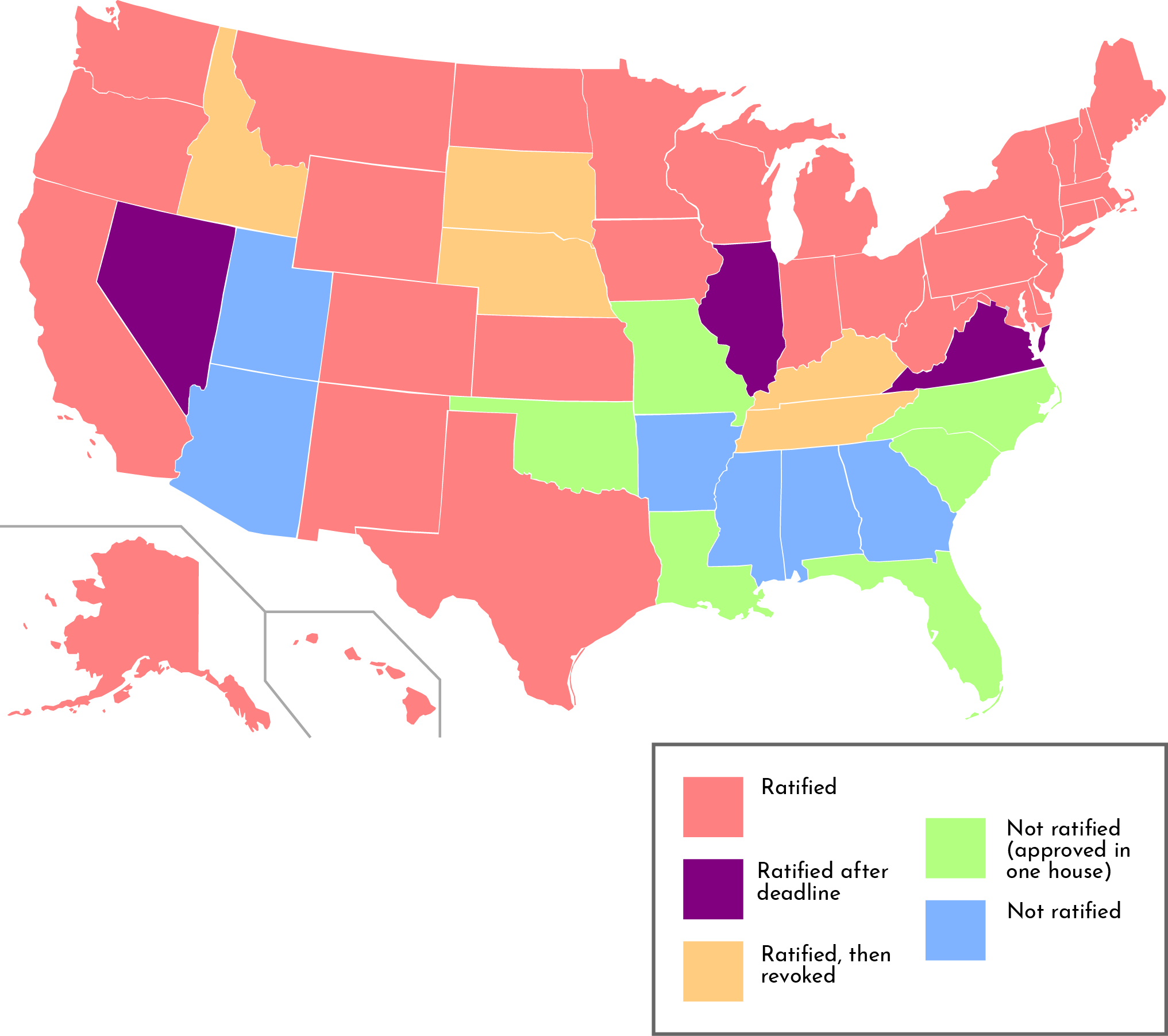Last month, Virginia became the 38th state to ratify the long-contested Equal Rights Amendment.
By some measures, this should mean the amendment becomes part of the Constitution—the 28th Amendment. But instead, Virginia and two other states are suing the federal government to advocate for the amendment’s adoption.
What’s going on? Here’s a primer:
What is the ERA?
The Equal Rights Amendment is an addition to the US Constitution that would prohibit discrimination based on sex. If adopted, it would become the 28th Amendment.
The suffragist and women’s rights activist Alice Paul authored the original amendment in 1923, but the House and Senate didn’t pass it until 1972. However, the amendment failed to take effect because it wasn’t ratified by a majority of states by an extended 1982 deadline—largely due to a campaign against it by conservative activist Phyllis Schlafly.
The main portion of the proposed Amendment (and the entirety of Virginia Delegate Danica Roem’s new tattoo) reads thus: “Equality of rights under the law shall not be denied or abridged by the United States or by any State on account of sex.”
What would it do?
This isn’t quite clear, and it’s something people have argued about for decades.
Let’s start with what most people agree on: “It would severely limit the ability of governments to make decisions explicitly on the basis of sex,” says John Harrison, a professor at the University of Virginia School of Law. But how this principle would be applied in actual laws and court cases is unclear, though there are some ideas. “That kind of law is sufficiently uncommon now that I don’t have any examples in mind,” Harrison says.
Proponents of the amendment tend to take a more limited view of the amendment’s effects, sometimes going saying the amendment would be largely symbolic. Kati Hornung, campaign coordinator for VA Ratify ERA says it would make it easier to prosecute cases of sex discrimination. Schlafly and others who opposed the ERA took a broader perspective, arguing the amendment would take away privileges women enjoy, like an exclusion from the draft.
What happened in Virginia?
A bill to ratify the ERA passed in Virginia on January 27, making it the final state needed to enshrine the amendment in the US Constitution
However, there are several reasons that might not happen: First, the amendment’s ratification deadline has already passed—almost four decades ago. And second, five states rescinded their ratifications in the ’70s. Whether these rescissions are valid is a matter of long dispute that goes back to the 14th Amendment, which was adopted in 1868 after the Civil War.

Because of these obstacles, Virginia and two other states have filed a court case that pushes for the amendment’s adoption.
Wait, who’s being sued?
The attorneys general of the three most recent states to ratify the order—Virginia, Illinois, and Nevada—filed a lawsuit against the Archivist of the United States, who’s responsible for keeping track of constitutional amendments.
What are these states hoping to accomplish?
The states are trying to convince the courts—namely the Supreme Court—to resolve this issue.
A district court will decide the case, and that decision will likely be appealed up to a possible review in the Supreme Court. Even then, Harrison says, it’s possible the Supreme Court will argue it can’t rule on this case. It may conclude that the decision is up to the political branches, namely the President and the archivist, who reports to the President, or Congress, who the Constitution explicitly gives this power.
Doesn’t Virginia’s state constitution prohibit discrimination on the basis of sex?
Yes! Since 1971, Virginia’s state constitution has included a provision protecting citizens from discrimination on the basis of sex. It specifies too that “the mere separation of the sexes shall not be considered discrimination.” However, a Constitutional amendment would mean a higher level of protection on a federal level.
Will it be adopted?
It’s difficult to say, but Harrison said it’s unlikely the Supreme Court would say the ERA has been ratified. Simply put, there may be too many obstacles.
Earlier this year, the Department of Justice said the only way for Congress to revive the ERA is to start over and reintroduce it as a new piece of legislation. This would mean it would have to pass the House and Senate once more and then be ratified by 38 states—again.
TL;DR?
Buckle up for a long ride.
















